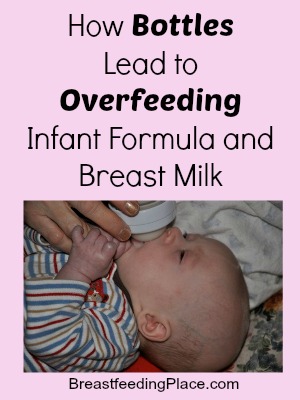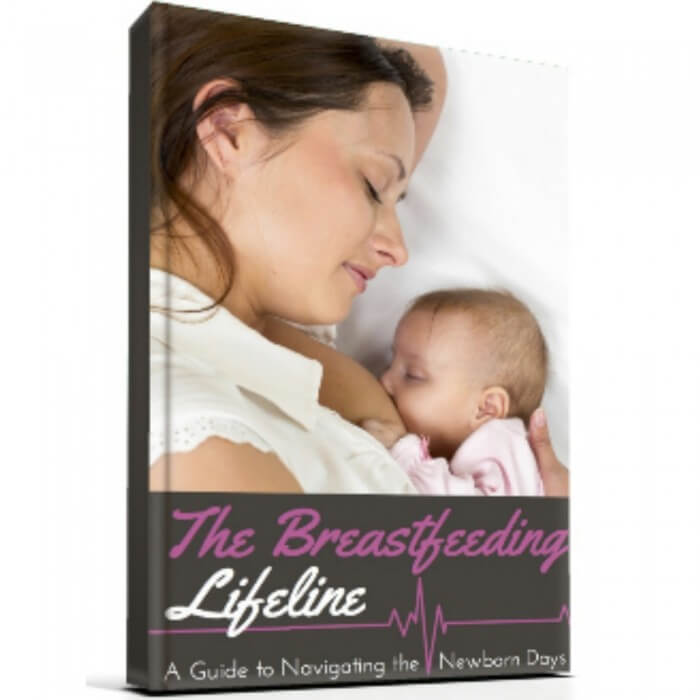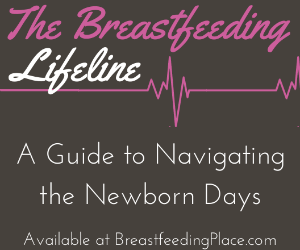 Oh, those early days and weeks of motherhood are rough, aren’t they? We are filled with worry as we are suddenly in charge of the life of another human being while being sleep deprived beyond belief. Whew! We’ve done a lot of research prior to giving birth and now we just want to do the best we can with what works for our families. One thing that is often overlooked in all the pre-baby research, and often not even touched on by doctors, is how bottles lead to overfeeding infant formula and breast milk.
Oh, those early days and weeks of motherhood are rough, aren’t they? We are filled with worry as we are suddenly in charge of the life of another human being while being sleep deprived beyond belief. Whew! We’ve done a lot of research prior to giving birth and now we just want to do the best we can with what works for our families. One thing that is often overlooked in all the pre-baby research, and often not even touched on by doctors, is how bottles lead to overfeeding infant formula and breast milk.
You’ll often hear mamas bragging in forums about how their babies are eating like champs and how they had to increase their bottle amounts. You’ll hear mamas weeping at feelings of failure because they don’t think they are making enough breast milk to satisfy their babe because he downed a bottle after a full nursing session – so he must be hungry.
Let’s take a breath, mamas. Here’s some science-y stuff that will explain what is going on with bottles and babies. I’m not bashing bottles at all – they are life saving in many cases. But for babies to thrive, we need to understand how both the breast and bottle work.
How Bottles Lead to Overfeeding Infant Formula and Breast Milk
Breast
When baby is at the breast, he has complete, or near complete in the case of learning to control fast flow, control over his intake. He can decide if he wants a drink, a meal, a snack, or just to pacify himself for comfort without getting any milk. Our bodies are amazing that way. Because baby has to work harder than with a bottle to get milk, his system has time to recognize hunger and satiety. Babes will not overeat at the breast.
Bottle
New babies are born knowing nothing. They are equipped with reflexes to keep them alive. That’s why you can see the breast crawl videos and watch a newly born babe find the breast, knead it and pinch it to get a letdown, and initiate suckling without any intervention from mom. It’s survival.
Babies are also born with a reflex that protects them from choking. When a baby feels liquid on his tongue, his reflex makes him swallow. His body wants to get that liquid out of there so he doesn’t choke. In the early weeks, a bottle will trigger this reflex and baby will empty the bottle, hungry or not. Here’s how it works.
The bottle is placed in baby’s mouth. Milk drips onto the tongue. Baby’s reflex has him swallow to clear his mouth. The act of swallowing creates suction. That suction pulls more milk from the bottle and fills baby’s mouth again. That reflex has him swallow which creates suction which pulls more milk from the bottle and fills baby’s mouth again…. You get the picture. This cycle continues until the bottle is empty.
After a few weeks or months, depending on the baby, he will learn how to take a break at the bottle. At the beginning though, in the baby’s mind, it is all about survival. His system has no time to register hunger and satiety.
The Takeaway
So, what does this mean for us as we feed our babies?
- Breastfeeding mamas – please don’t be heartbroken if baby finishes a bottle after nursing. Just because he finishes a bottle (no matter breast milk or formula) it does not mean that your supply is low. It’s a survival reflex. Look to diaper output and growth as the best indicators of supply and learn more about low milk supply and how to reverse it.
- Pacing – babies fed by bottle need help pacing themselves. We need to make their bottle experiences, especially early on, as close to the breast experience as we can. We need to use slow flow nipples to make baby work harder. We need to try different positions besides flat on his back to better mimic nursing so he has to work against gravity some. We need to pace the feed. Remove the bottle every half ounce to one ounce. Give baby a chance to take a breath and start to feel if he is still hungry or not.
- Offering – try simply offering the bottle by brushing the nipple on his cheek rather than putting it in his mouth. If he is hungry, he will root for the nipple. If he isn’t, he most often will not. Offer after each pacing break rather than just insisting he finish.
- Amount – pay attention to the amount of milk you offer. Breastfeeding and formula feeding differ in amounts for bottle feeding. As baby grows, he will need more and more formula to meet his caloric needs. He will not need more breast milk since it changes to meet his needs. He will only need about 1 – 1.5oz of breast milk per hour. The amount your baby eats has no bearing on how advanced he is.
- Relax – your baby will not starve himself. If he is truly hungry, he will let you know. And as he grows, he will learn how to manage a bottle with less help from you.
Early eating habits set the stage for healthy eating habits through life so it is important to catch overfeeding and work toward providing baby with just what he needs to thrive. Take these tips under consideration as you do what is best for your baby!






Speak Your Mind